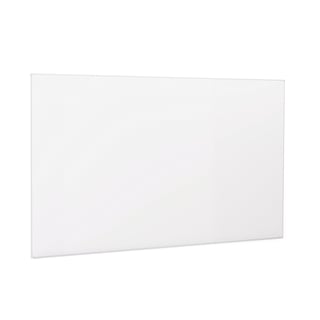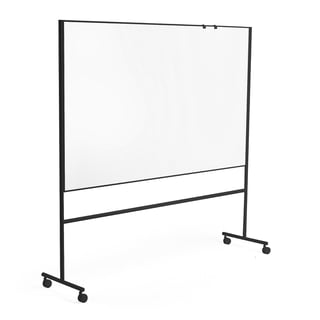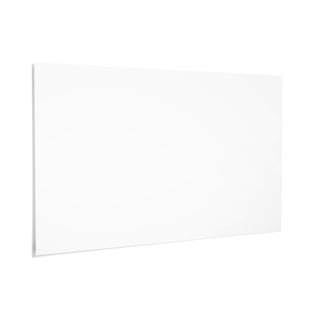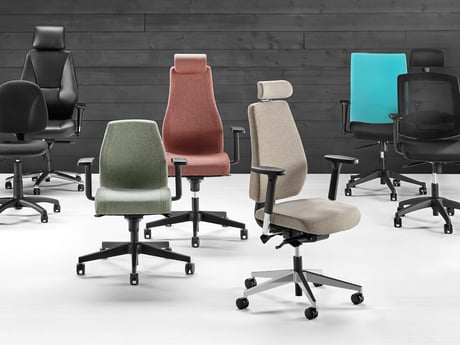
How to Clean a Whiteboard or Dry Erase Board
Why Do Whiteboards Get Dirty?
Over time, whiteboards accumulate stains and ghosting, making it difficult to write and erase clearly. The most common reasons for this include:
- Dried marker ink: Prolonged use without proper cleaning can leave behind stubborn stains.
- Residual grease from hands: Touching the board with bare hands transfers oils that trap dirt and ink.
- Low-quality markers: Cheaper markers may contain ink that does not fully erase, leading to ghosting.
- Incorrect cleaning products: Using soap, detergent, or alcohol-based cleaners can damage the enamel surface, making it harder to clean.
Modern whiteboards are usually made with an enamel-coated surface, which is designed for durability and easy maintenance. However, regular cleaning and proper marker use are essential to keep your whiteboard looking new.
Essential Whiteboard Cleaning Tips
Keeping your whiteboard clean is simple with the right techniques. Follow these steps to maintain a spotless writing surface.
Daily Maintenance
- Use a dry microfiber cloth or whiteboard eraser for regular wiping.
- Replace your eraser periodically to avoid smudging old ink.
- Ensure markers are completely dry before wiping to prevent smearing.
Deep Cleaning for Tough Stains
- Wipe the board with a damp cloth and lukewarm water.
- For stubborn stains, use a whiteboard cleaning spray and wipe with a soft cloth.
- Avoid using harsh cleaners like soap, alcohol, or glass cleaner, as they can degrade the board's surface.
Preventing Ghosting and Staining
- Always use high-quality dry erase markers to prevent ink residue.
- Clean the board at least once a week to prevent build-up.
- Test new markers on a small section before regular use.
By following these cleaning practices, you can extend the lifespan of your whiteboard and ensure a clear writing surface for years to come.
Comparison: Whiteboard Cleaning Methods
Not all cleaning methods are equally effective. The table below compares different ways to clean a whiteboard, highlighting their strengths and potential drawbacks.
CLICK TO COMPARE WHITEBOARD CLEANING METHODS
| Cleaning Method | Effectiveness | Best For | Potential Drawbacks |
|---|---|---|---|
| Dry Eraser | Excellent | Daily maintenance | Must be replaced periodically |
| Damp Cloth & Water | Good | Light stains & general cleaning | May leave streaks if not dried properly |
| Whiteboard Cleaner | Excellent | Removing deep stains & ghosting | Overuse may damage surface |
| Isopropyl Alcohol | Good | Removing stubborn stains | Can strip the protective layer over time |
Understanding these methods can help you choose the best approach for keeping your whiteboard clean and functional.
How to Properly Maintain Your Whiteboard
Regular maintenance extends the lifespan of your whiteboard and ensures it stays easy to clean. Follow these best practices for long-term care.
Proper Storage of Markers & Accessories
- Store markers horizontally to prevent uneven ink flow.
- Keep cleaning cloths and erasers nearby for quick maintenance.
- Use a dedicated storage tray to prevent accidental damage.
When to Replace Your Whiteboard Accessories
- Replace erasers every few months to prevent ink buildup.
- Switch out old markers when they start leaving streaks.
- Use only high-quality whiteboard cleaners to avoid damaging the surface.
Long-Term Care Tips
- Avoid using sticky notes on the board, as they leave adhesive residue.
- Clean the board at least once a week to prevent ghosting.
- Ensure the board is completely dry before writing on it to avoid ink smudging.
By implementing these care strategies, you can ensure your whiteboard remains in top condition for years to come.

Conclusion: Keep Your Whiteboard Looking New
Regular maintenance and the right cleaning techniques ensure your whiteboard remains clear, functional, and long-lasting. Whether for office meetings, classrooms, or brainstorming sessions, a well-maintained whiteboard enhances productivity and organisation.
By following the best cleaning practices, you can:
- Prevent ghosting and maintain a clean writing surface.
- Extend the lifespan of your whiteboard.
- Ensure clear and professional presentations in any environment.
- Reduce the need for harsh chemicals by implementing regular upkeep.
With simple cleaning habits and the right tools, keeping your whiteboard spotless is easy. Make whiteboard care a part of your routine and enjoy a smooth writing experience every time.
















